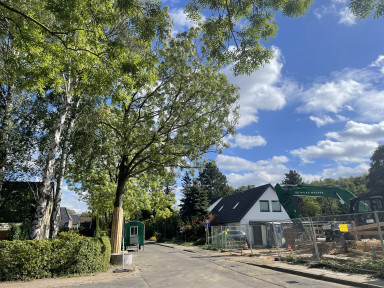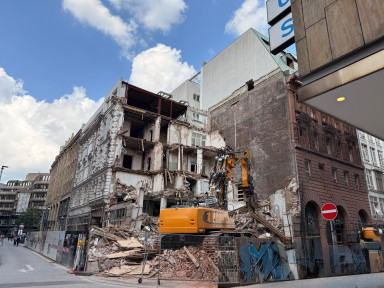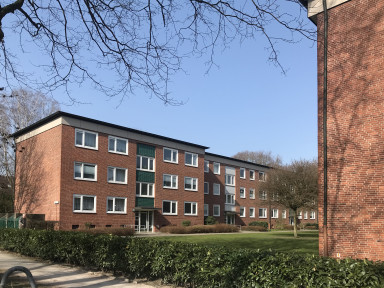Between transformation and non-intervention
Navigating urban futures in the single-family housing landscape
Single-family housing (SFH) constitutes one of the largest but least examined segments of the German housing stock. This project investigates how transformation of SFH is shaped by ownership structures, governance regimes, and socio-cultural norms. Drawing on urban regime theory and feminist planning perspectives, it examines how coalitions, power dynamics, and settlement logics sustain or challenge single-family housing as a deeply embedded form of urban living. In doing so, the study situates SFH as a contested arena of urban future-making, where competing visions of sufficiency, justice, and ecological responsibility intersect with persistence and path dependency.
- single-family housing
- post-war architecture
- urban regime theory
- feminist planning theory
- discourse analysis
Context
Single-family housing constitutes nearly one-third of the residential stock in the former West Germany – 16.3 million buildings in total1 – and remains a powerful cultural ideal symbolizing autonomy, stability, and socio-economic success. At the same time, single-family housing areas face increasing scrutiny: They consume large amounts of land, reinforce low-density settlement patterns, and pose challenges with regard to demographic change, under-occupancy, and deferred modernization. Urban debates, however, continue to focus mainly on new housing construction, while the existing single-family housing stock in cities remains understudied. Addressing single-family housing is therefore central for housing policy, land-use justice, and climate mitigation, yet planning practice is fragmented and constrained by legal rigidity, small-scale ownership structures, and individualized planning burdens. This project positions single-family homes as a key terrain of urban future-making – where past futures materialize and new ones are negotiated, and where the contradictions between persistence and transformation become visible.
Aims
The research examines how the transformation of single-family housing stock in major German cities is framed, organized, and enacted – across discourse, institutional regulation, and planning practice. Rather than searching for universally transferable solutions, the project focuses on the situated politics of change, asking how planners, institutions, and residents navigate contradictions, attachments, and conflicts in reworking a deeply embedded settlement form.
Central to this are three analytical dimensions:
Framing – How SFH is represented in policy and planning discourses, and which meanings and imaginaries shape the scope for action.
Organizing – How legal, institutional, and governance frameworks structure SFH transformation.
Enacting – How discursive framings and institutional arrangements materialize in local planning practices and built forms.
To analyse these dynamics, the project draws on urban regime theory, which conceptualizes governance not primarily as control or subordination but as the assembling of governing capacity – ‘power to’ rather than ‘power over.’2 More specifically, governing capacity is rooted not only in coalition structures but also in processes of framing, incubation, and agenda-building that generate shared purposes and enable collective action.3 Against this backdrop, the project also examines the persistence of SFH, showing how institutional path dependencies, resident attachments, and political hesitation foster inertia or resistance to change, while coalitions, resource exchanges, and institutional arrangements simultaneously enable or constrain transformation.4
By attending to both transformation and non-transformation, the study illuminates the contradictions inherent in rethinking a culturally embedded settlement form. Ultimately, it contributes to broader debates on urban future-making by showing how visions of ecological responsibility, social justice, and spatial sufficiency are negotiated in tension with entrenched settlement logics, institutional routines, and planning realities.
Research design
The study applies a qualitative, multi-method approach that combines macro-level analyses with in-depth case studies. At the macro level, a conceptual literature review and stock analysis establish the empirical foundation, while a qualitative discourse analysis5 examines how single-family housing is framed in strategy papers, policy documents, and media. Building on this, two case studies in German cities trace how abstract framings and institutional frameworks materialize in local planning and governance. The cases are selected according to a comparative logic: similar spatial and demographic baseline conditions but contrasting institutional approaches to single-family housing governance. Methods include policy and document analysis, semi-structured expert interviews, and visual-spatial tools such as mapping, observations, and photographic documentation. By triangulating these methods, the project captures how abstract concepts – such as sufficiency and spatial justice – are translated, contested, or resisted in institutional practice and the built environment, while also revealing the tensions between theoretical ambition and planning realities.
Supervisors:




